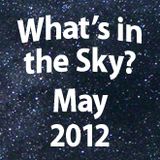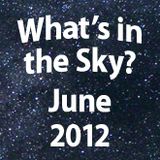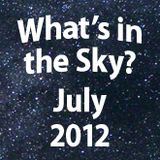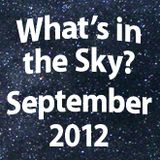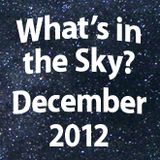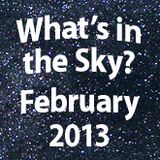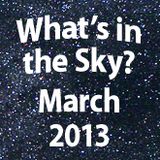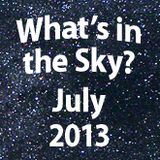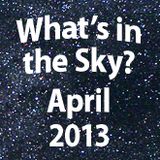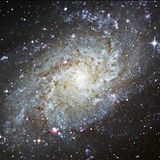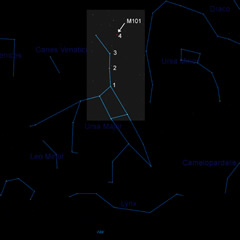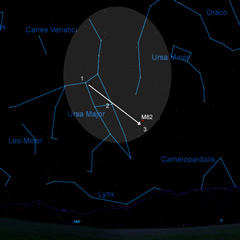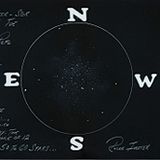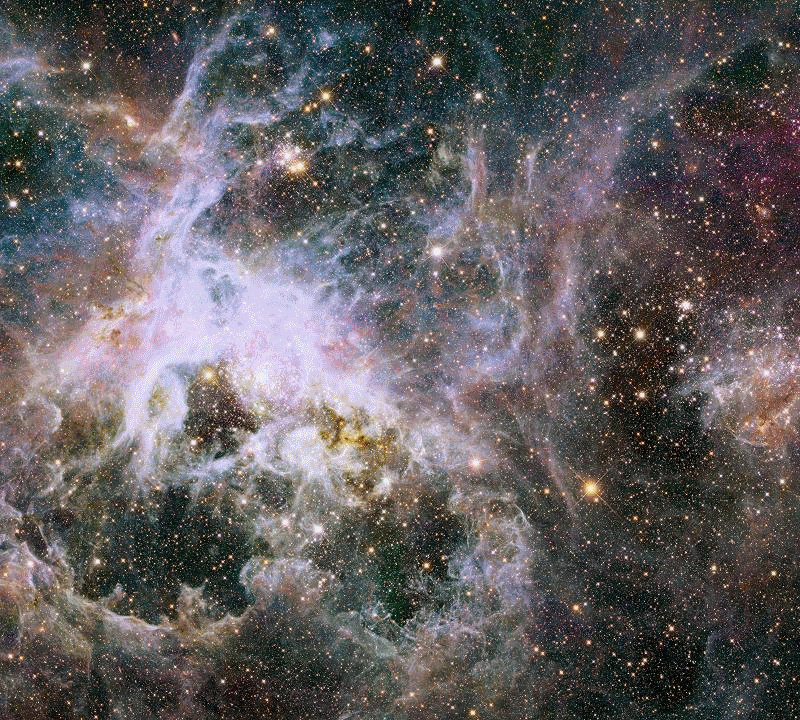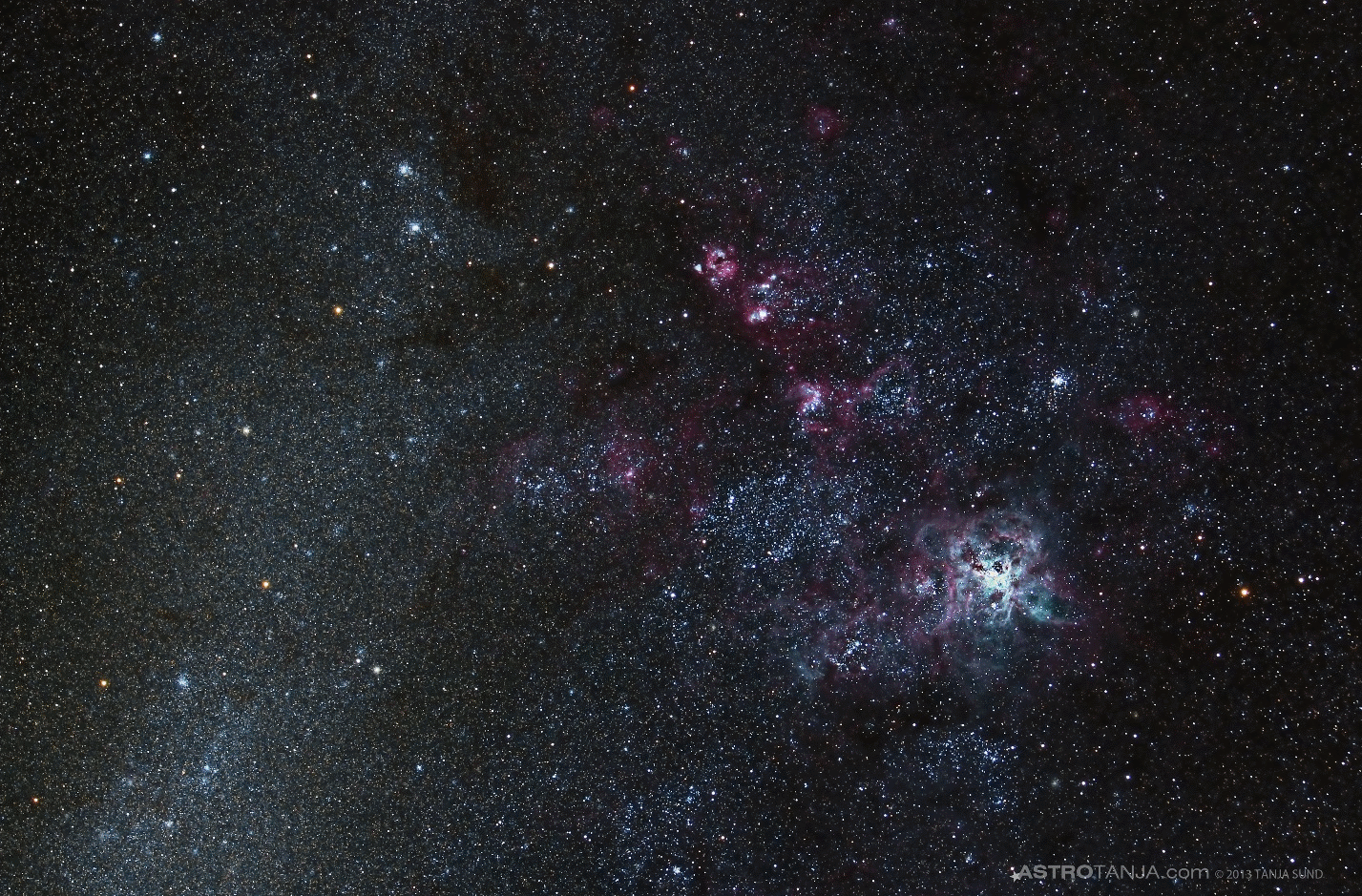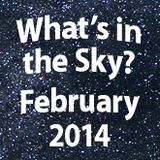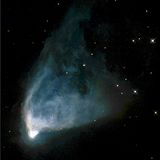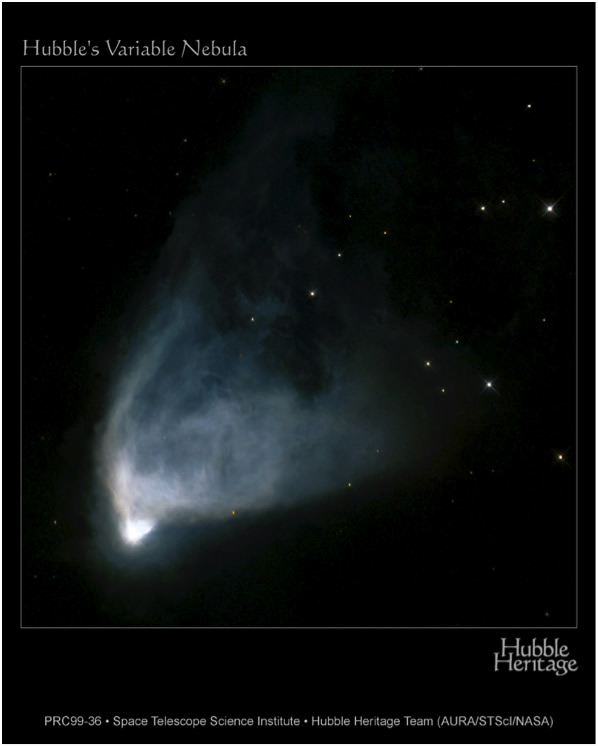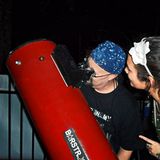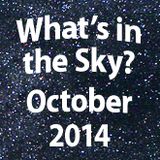- Telescopes
- Solar
- Mounts & Tripods
- Accessories
-
Astrophotography
- Sale Astrophotography
- New Astrophotography Products
- Astrophotography Kits
- Astrophotography Telescopes
- Astrophotography Cameras
- Astrophotography Solutions
- Autoguiding Solutions
- Astrophotography Accessories
- Camera Adapters & T-Rings
- Astrophotography Filters
- Focal Reducers and Field Flatteners
- Video Astrophotography
- Binoculars
- Sale
- Gift Center
- Shop by Brand
{"closeOnBackgroundClick":true,"bindings":{"bind0":{"fn":"function(){$.fnProxy(arguments,\'#headerOverlay\',OverlayWidget.show,\'OverlayWidget.show\');}","type":"quicklookselected","element":".ql-thumbnail .Quicklook .trigger"}},"effectOnShowSpeed":"1200","dragByBody":false,"dragByHandle":true,"effectOnHide":"fade","effectOnShow":"fade","cssSelector":"ql-thumbnail","effectOnHideSpeed":"1200","allowOffScreenOverlay":false,"effectOnShowOptions":"{}","effectOnHideOptions":"{}","widgetClass":"OverlayWidget","captureClicks":true,"onScreenPadding":10}
{"clickFunction":"function() {$(\'#_widget1425988098003\').widgetClass().scrollPrevious(\'#_widget1425988098003\');}","widgetClass":"ButtonWidget"}
{"clickFunction":"function() {$(\'#_widget1425988098003\').widgetClass().scrollNext(\'#_widget1425988098003\');}","widgetClass":"ButtonWidget"}
{"snapClosest":true,"bindings":{"bind0":{"fn":"function(event, pageNum) { PagedDataSetFilmstripLoaderWidget.loadPage(\'#recentlyViewed\', Math.floor(pageNum)); }","type":"scrollend","element":"#_widget1425988098003_trigger"}},"unitSize":220,"widgetClass":"SnapToScrollerWidget","scrollSpeed":500,"scrollAmount":660,"afterScroll":"","animateScroll":"true","beforeScroll":"","direction":"vertical"}
{entityCount: 0}
{"emptyItemViewer":"<div class=\"image\"><!-- --></div>\n <div class=\"info\">\n <div class=\"name\"><!-- --></div>\n <div class=\"orionPrice\"><!-- --></div>\n </div>\n ","imageThreshold":3,"pages":2,"dataModel":{"imageWidth":90,"cacheEntitiesInRequest":false,"dataProviderWidget":"com.fry.ocpsdk.widget.catalog.dataproviders.RecentlyViewedDataProviderWidget","imageHeight":90,"itemViewerWidget":"com.fry.starter.widget.viewers.ItemViewerWidget","direction":"vertical"},"pageSize":3,"widgetClass":"PagedDataSetFilmstripLoaderWidget","loadThreshold":1,"direction":"vertical"}
{"showSinglePage":false,"totalItems":263,"defaultPageSize":20,"paging_next":"Next","paging_view_all":"View All 263 Items","paging_view_by_page":"View By Page","pageSize":20,"paging_previous":"Prev","currentIndex":240,"inactiveBuffer":2,"viewModeBeforePages":true,"persistentStorage":"true","showXofYLabel":false,"widgetClass":"CollapsingPagingWidget","activeBuffer":2,"triggerPageChanged":false,"defaultTotalItems":263}
May evenings provide a great opportunity to grab your telescope and see some of the best celestial treats in the sky! With weather warming up and skies clearing up, there’s no shortage of celestial delicacies to observe. During mid-May nights, Saturn and its stunning rings will be due south of the bright star Arcturus. Just about any telescope will show you Saturn and its marvelous ring system at powers of 40x or above, but views through larger aperture scopes will be better than those through smaller instruments. Here are a few more highlights to keep your eyes peeled for during May
The Active Sun - We’re near solar maximum so it’s a great time to use a simple white light solar filter for dramatic views of ever-changing sunspots. (CAUTION: Never look at the Sun, even for an instant, without a properly fitted solar filter).
The Rings of Saturn - Saturn is visible to the naked eye as a bright disk following the ecliptic path, but you need a telescope and a fairly high power eyepiece (40x or higher) to see the rings and orbiting moons.
Mars - The Red Planet is visible to the naked eye as a reddish disk, but you need a telescope with a fairly high power eyepiece to see any details on our dusty neighbor.
Galaxies in The Big Dipper - including M81, M82 and M101. Use a telescope to catch glimpses of galaxies lurking around the recognizable Big Dipper asterism, use a star chart and track some down! Explore the Virgo Cluster of Galaxies - Point your telescope a couple of Moon diameters east of the star at the end of Leo, Denebola, and start scanning with a low power eyepiece; use a star chart to tell which ones you see!
Annular Solar Eclipse - Visible from many northwestern North America locations prior to sunset on May 20. With a solar filter-equipped telescope or pair of binoculars, you can enjoy the show as the Moon passes between the Earth and the Sun. (CAUTION: Never look at the Sun, even for an instant, without a properly fitted solar filter).
Venus - Cloudy Venus is a bright beacon in May evening skies. Train your telescope on our planet’s next-door neighbor and catch glimpses of its dense cloud-choked atmosphere.
The Great Devil Ball, Omega Centauri - The grandest globular star cluster of them all will be visible in May skies to telescope and binocular observers based in Southern U.S.A.
Extra-Galactic Treats in Leo - Use a telescope to hunt down faint fuzzies and deep-space phenomena in and around the constellation Leo under clear May skies. The bigger the telescope, the better your views will be!
Tracking Down M87 - Use big astronomical binoculars or a telescope to see the supergiant elliptical galaxy M87 (a.k.a NGC 4486) in the Virgo cluster and see where a black hole lurks! While we cannot observe the supermassive black hole at the core of this mysterious elliptical galaxy, it’s fun to track down this celestial showpiece.
{ sourceURL:'/catalog/includes/quicklook_miniproduct.jsp?entityId=101998&entityTypeId=4', sourceSelector:'' }
Warm weather, clearing skies, and a variety of celestial events make June a great time to get outside and enjoy the wonders of the sky. The whole family will enjoy summer stargazing sessions in the backyard or at your favorite dark-sky site.
You don’t want to miss the action as Venus transits the face of the Sun prior to sunset on June 5th, but BE SAFE and remember to use protective solar filters for your telescope or binoculars. This is truly the solar event of our lifetimes, considering the next Venus transit won’t occur until December of 2117!
Here are a few more celestial highlights for June stargazing:
Partial Lunar Eclipse – Catch a partial eclipse of the Moon on the evening of June 4th from Northwestern locations of North America.
Solar Transit of Venus – Use a telescope or binocular fitted with a protective solar filter and catch the transit of Venus across the Sun before sunset on June 5th. Don’t miss it!
Mars - The Red Planet is visible to the naked eye as a reddish disk, but you need a telescope with a fairly high power eyepiece to see any details on our dusty neighbor.
The Active Sun – Our nearest star will provide great daytime views of sunspots and activity throughout June as we approach solar maximum. Don’t forget that safe solar filter!
Saturn – Throughout June, the ringed planet will be an attractive target for stargazers. Use an eyepiece that will yield at least 40x in your telescope to catch views of Saturn’s beautiful rings and orbiting moons.
Great Globular Cluster in Hercules – Track down popular planetary nebula M57 in the constellation Lyra in June skies. You’ll need a telescope with at least 4.5" aperture to see the interior hole of the ring. Use an 8" or larger reflector for more detailed views.
Colorful Double Albireo – While it may look like a single star to the naked eye, use a telescope to split popular double star Albireo into its two contrasting components. Albireo A shines a bright amber color, while Albireo B is blue-green in color.
Whirlpool Galaxy – On clear June evenings, use astronomical binoculars or a telescope to see M51, the Whirlpool Galaxy and its attached companion galaxy M51b in the constellation Canes Venatici.
Summer Milky Way – Get away from city lights this June to see the cosmic clouds of our own galaxy, the Milky Way with unaided eyes. Take a closer look with binoculars or a telescope for more detail.
{ sourceURL:'/catalog/includes/quicklook_miniproduct.jsp?entityId=102046&entityTypeId=4', sourceSelector:'' }
Throughout July, as summer nights grow shorter, you’ll need to start observing about 10pm to see the best views of the summer night sky. If you venture out to a favorite dark sky site away from city lights, you’ll find some of the best celestial treats waiting for you in inky-black skies.
Here are a few of Orion’s top picks for July stargazing:
The Summer Milky Way – Our own galaxy, the Milky Way, will stretch across the July sky from roughly due north to due south embracing such constellations as Cygnus, Cassiopeia and Sagittarius. Under dark skies, the naked eye is a great tool to appreciate this deep sky wonder, but binoculars or a wide angle telescope will enhance your views of our home galaxy!
The Ringed Giant Saturn – Saturn is still visible lower in the Southwest portion of the night sky during July. Use a telescope with about 40 or more power and you’ll see Saturn’s stunning rings. Try and catch it during twilight when it is still higher above the western sky for the best views.
The Summer Triangle – Take a look at our monthly star charts online or a planisphere like the Orion StarTarget and you’ll see three bright stars that dominate the northern sky - Altair, Deneb and Vega; the Summer Triangle. Around 10pm throughout July, Vega, the western most star of the triangle will be nearly overhead.
M57, a Dying Star – Just Southeast of Vega, between the stars Sheliak and Sulafat in the constellation Lyra (consult a star chart or a smartphone program like Orion’s StarSeek app) is the famous "Ring Nebula" or M57. In large telescopes with high-power eyepieces, some observers have even seen the central star.
The Wild Duck Cluster – South of the southernmost star of the Summer Triangle, Altair, in the constellation of Aquila is M11, the Wild Duck Cluster. M11 is a small but rich open star cluster that can be seen with a telescope in even moderately light-polluted skies.
M22, a Grand Globular Cluster – Globular Star Cluster M22, an old, dense ball of tens of thousands of stars can be seen in July in the constellation of Sagittarius. Many amateurs like the appearance of M22 more than another popular globular, M13, since it is slightly more "open" and its stars are perhaps a little easier to resolve.
M8, the Lagoon Nebula – West and slightly south of M22 is M8, one of the "Four Grand Nebulas of Summer." M8 is in Sagittarius just off the "spout" of the teapot asterism. From a dark sky location it is visible to the unaided eye as a hazy patch. Binoculars and larger telescopes will reveal more of this nebula’s details.
M20, the Trifid Nebula – About a binoculars’ field-of-view northeast of M8 is another summer treat, the Trifid Nebula. The Trifid is visible in binoculars from a dark sky and larger telescopes show two distinct globs of lowing gas. The northern glob is dissected into three smaller lobes by dust lanes, giving the name Trifid to M20.
M17, the Swan Nebula – North of M20 is another nebula, the Swan Nebula, or M17. Like M8 and M20, the Swan is a glowing gas cloud where gas and dust are being gravitationally pulled together to form new stars. Use binoculars in a dark sky site or a telescope and Oxygen-III filter in areas of moderate light pollution.
M16, the Eagle Nebula – The last of the Four Great Summer Nebulas is the Eagle or "Star Queen" nebula. More delicate and fainter than M17, this is pretty easily seen with just binoculars from the good sky conditions of a national park, but difficult from a city. As with all deep sky objects, try to find M16 when the Moon is down for best results.
{ sourceURL:'/catalog/includes/quicklook_miniproduct.jsp?entityId=102127&entityTypeId=4', sourceSelector:'' }
Here are a few of Orion’s top picks for September stargazing:
A Planetary Bonanza in September–In early September Mars, Saturn will put on a show low in the western twilight after sunset. In the morning sky, Jupiter is rising sooner and sooner, dominating the morning sky. Venus also graces the morning sky. If you want more of a challenge, Uranus and Neptune are in excellent position since Uranus reaches its brightest as it nears opposition in September.
The Northern Milky Way–In early September, around 9 PM, the "Summer Triangle" of three bright stars (Vega, Deneb and Altair) is nearly overhead. In the northernmost portion of the Summer Triangle, you’ll see the brightest portion of the northern Milky Way. Point a telescope there and you’ll discover that the fuzzy outlines of the Milky Way will resolve into fields of glittering stars.
Planetary Nebulas in the Summer Triangle–Get a star chart and see how many of these you can find: the famous Ring Nebula (M57) in the constellation Lyra; the Dumbbell Nebula (M27) in Vulpecula; and the "Blinking Planetary," NGC 6826 in Cygnus. Not far outside the western boundary of the Summer triangle is a small, but intensely colorful planetary nebula, NGC 6572.
Another Island Universe–In early September, lurking low in the northeastern sky is another galaxy, separate from our Milky Way, the Great Andromeda Galaxy, or M31. From a dark, moonless sky, M31 is visible with the unaided eye as a slightly fuzzy spot, a pair of 7x50 or larger binoculars will give you a good view and telescopes will reveal some of the dust lanes in the galaxy.
More Extra-GalacticTreats–If you haven’t tracked down "The Whirlpool Galaxy," M51, off the handle of the easily recognizable Big Dipper, do it now while you still can! It will be too low for most people to get a good view after September and you’ll need to wait till late winter or next spring to catch a good view of this picturesque galaxy.
Find Mirach’s Ghost–Go back to Andromeda and locate nearby Beta Andromeda, the bright star to the SE of M31. This star has also been named Mirach. If you have a 6" or larger telescope, take a close look at Mirach, off to side, almost lost in the glare you can see another galaxy, Mirach’s Ghost.
A Brilliant Open Star Cluster–Off the western end of Cassiopeia is the Open star Cluster M52. You can find it with binoculars from a dark sky but the view is definitely better in a telescope. With a larger scope, say 8" or larger, and with the aid of an UltraBlock or O-III eyepiece filter, you may be able to catch views of faint emission nebulas near M52.
Two More Brilliant Star Clusters–If you liked M52, you’ll love the "Double Cluster in Perseus." Lying between Cassiopeia and Perseus is a bright, fuzzy spot in the Milky Way, and a binocular or telescope will reveal two, bright open star clusters. It appears low in the northeast around 9 PM early in September; but, as it climbs as the evening wears on, it becomes a real showpiece.
The Globular Star Clusters of Fall–Almost in a row, off the western side of Pegasus are three globular star clusters that line up almost north-south. These sparkling clusters are, starting with the most northern globular, M15 in Pegasus; M2 in Aquarius and M30 in Capricorn. From a dark sky site you can find all of them in binoculars!
A Dying Star–A challenging, but wonderful object is the Helix Nebula in the constellation Aquarius. Don’t try this from the city; the Helix is big, but really faint. Wait until later in the evening at a dark sky site to catch this planetary nebula, since it will be easier to see the further it rises from the horizon. The best views will be in telescopes of 80mm or larger aperture, at LOW power and with an O-III eyepiece filter.
{ sourceURL:'/catalog/includes/quicklook_miniproduct.jsp?entityId=102303&entityTypeId=4', sourceSelector:'' }
November presents some clear, cool nights for many locations (between winter storms). So bundle up and get outside for stargazing fun!
Milky Way-In early November, stretching from overhead to the southwestern horizon, you can still catch bright portions of the Milky Way. As the month goes on and Earth marches in its orbit around the Sun, the Milky Way will appear lower and lower to the western horizon. The Milky Way is a wonderful target to explore with 50mm or larger binoculars or a wide-field telescope; there are dozens of star clusters to pick out, even in moderately light polluted areas.
Big and Bright Jupiter-In Early November go outside about 9pm on a clear night. Face east and look about half way up towards the zenith, which is directly overhead. Here you'll easily see the bright and big planet Jupiter. Use a telescope to enjoy views of its four brightest moons (Io, Europa, Ganymede, and Callisto) and its striking equatorial cloud belts. A 3" or larger telescope will give rewarding views.
Fire in the Sky-On Saturday night, November 17 the Moon is only a few days old so the conditions are good for the late night appearance of the Leonids Meteor Shower. This shower is predicted to peak on the night of November 17 (and the morning of the 18th) and will have dozens of meteors per hour visible from a dark sky location. The Leonid shower is known for its bright meteors, the brightest of which leave a trail high in the sky that can take several seconds or longer to dissipate.
Best Galaxy Ever!-M31, The Andromeda Galaxy. Around 9pm in early November, M31 lies just north of the stars that form the constellation of Andromedea/NE of Pegasas. Use a star chart, planisphere, or your Orion StarSeek app to help find it with binoculars. You can take a better look with a telescope using a wide angle eyepiece. From a dark sky site this galaxy is an easy naked-eye object as well; Andromeda is the closest large galaxy to our own Milky Way, about 2 million light years away.
A Bright Spot in the Milky Way-High in the northern sky at 10pm is a brighter knot in the Milky Way, between the constellations of Perseus and Cassiopeia. With binoculars you can tell that it is really two open star clusters side by side, the famous Double Cluster in Perseus. Also called NGC 884 & NGC 889, these clusters are relatively close to Earth, about 7-8,000 light years away. They're also very young clusters. Astronomers believe these are only about 3-5 million years old, just "babies" on the cosmic timescale!
A Dark Sky Test-On the opposite side of Andromeda is another nearby galaxy, M33. Use a star chart to look for it in 50mm or larger binoculars. If you have a dark sky to observe from, you can even detect this galaxy with the unaided eye. In fact, M33 is used as a test by many experienced observers to judge the darkness and transparency of a potential observing site.
Catch a Dying Star-High in the western sky, early in the evening, the constellation of Cygnus is still prominent and topped off by the star Deneb at the top of the "Northern Cross". With a star chart, track down the Veil Nebula on the eastern side of Cygnus near the star 52 Cygni. Use an Oxygen III filter and low power while you scan for this object. The Veil is a remnant of a supernova explosion, where a star has died. We recommend a 4" or larger telescope to catch it (but it has been seen in smaller scopes from good dark sky locations).
November's Challenge Object-The Silver Dollar Galaxy, NGC 253. At 9pm, low in the south is the "starburst" galaxy NGC 253. From a dark sky, this grand galaxy is easy to see in binoculars and with a telescope, but can you see it with your naked eye? If you can see this challenging object without a telescope, you definitely have excellent skies (dark and transparent) and you are probably looking at the most distant object that a person can see without a telescope, about 11.5 million light years distant from Earth.
All objects described above can easily be seen with the suggested equipment from a dark sky site, a viewing location some distance away from city lights where light pollution and when bright moonlight does not overpower the stars. All objects have been verified by actual observations by Orion Telescopes & Binoculars Staff at Fremont Peak State Park, and/or Deep Sky Ranch, 60 miles and 90 miles respectively from San Jose International Airport, San Jose, CA.
{ sourceURL:'/catalog/includes/quicklook_miniproduct.jsp?entityId=102410&entityTypeId=4', sourceSelector:'' }
December brings cold winter nights and some of the clearest skies of the year for many locations. Bundle up to keep warm and get outside for stargazing fun!
Here are a few of Orion's top picks for December stargazing:
December Meteors - On December 13th, take advantage of the dark, New Moon sky conditions to see the Geminids meteor shower. Leftover debris from the disintegrating asteroid 3200 Phaeton will streak across the sky at a rate of up to 120 meteors per hour. The best views will be from a dark sky location on the night of December 13th into the early morning hours of December 14th. Look for meteors to appear to radiate out from the constellation Gemini.
Big Bright Jupiter - In early December, go outside around 7PM on a clear night. While facing east, look about halfway upwards towards the zenith (the zenith is directly overhead) to find the bright planet Jupiter. This gigantic planet is a perfect target for telescopes of all sizes throughout the month. Jupiter reaches "opposition" on December 3rd, when it will be opposite the Sun in the sky and visible all night long.
Our All Time Favorite - Low in the eastern sky by 9pm you'll find the Orion Nebula (M42), a patch of glowing gas and dust where stars are formed. You can spot M42 just below Orion's belt; sharp-eyed observers can see it as a "fuzzy" star, easily seen in a pair of 7x50 or larger binoculars. By midnight it will be nearly due south, about halfway between the horizon and the zenith. The view through a telescope is spectacular.
Great Galaxies - Around 7pm in early December, galaxies M31 and M33 will be on either side of the constellation Andromeda and nearly overhead. Use a star chart or planisphere to catch them with 50mm or larger binoculars, or take a deeper, better look with a telescope.
Theta Orionis, the Heart of the Orion Nebula - Also known as the Trapezium, the four brightest stars in the core of M42, the Orion Nebula. The Trapezium stars are extremely hot and the ultraviolet light they release makes the surrounding gas fluoresce, or "glow". It will take a 4" or larger telescope to see all four Trapezium stars; they are very close together, so use a Barlow or a higher power eyepiece when M42 is higher in the sky and the seeing is steady.
Three Little Clusters, All in a Row - M36, M37 and M38. If you've ever thought all star clusters look alike, track three clusters down for a pleasant surprise. They are in the constellation Auriga which has the bright star Capella high in the northeast around 7pm in early December. The clusters can be seen with just about any telescope. You'll notice differences in the star patterns and intensities between the clusters. Use low powers to find objects like these star clusters, since you'll have a wider field of view, making it easier to sweep the sky.
December's Challenge Object, The Rosette Nebula - Wait until at least 10pm or midnight to see this nebula east of Betelgeuse, the reddish star in the eastern shoulder of Orion. About a binocular field away in the winter Milky Way will be the Rosette Nebula. It's an emission nebula like the Orion Nebula, but far dimmer and even larger. There is a star cluster, NGC 2244, in the center of the Rosette that you can see even with small 80mm telescopes. Use a low power, wide angle eyepiece and an Oxygen-III filter to tease out the nebula's glow around the cluster.
All objects described above can easily be seen with the suggested equipment from a dark sky site, a viewing location some distance away from city lights where light pollution and when bright moonlight does not overpower the stars. All objects have been verified by actual observations by Orion Telescopes & Binoculars Staff at Fremont Peak State Park, and/or Deep Sky Ranch, 60 miles and 90 miles respectively from San Jose International Airport, San Jose, CA.
{ sourceURL:'/catalog/includes/quicklook_miniproduct.jsp?entityId=102623&entityTypeId=4', sourceSelector:'' }

Mark your calendars and organize star parties with friends and family to catch these noteworthy 2012 night sky events. In addition to key celestial events, we’ve also listed the First Quarter and New Moon phase dates for each month. The First Quarter Moon provides interesting views of the lunar terminator region and New Moon evenings are great opportunities to observe deep sky objects.
January
Kick off the New Year by watching the Quadrantids meteor shower peak on the 3rd and 4th, and enjoy great views of Jupiter all month long.
 January 1 – First Quarter Moon
January 1 – First Quarter Moon January 3 – Jupiter 5° South of the Moon
January 3 – Jupiter 5° South of the Moon January 3, 4 – Quadrantids meteor shower peaks. Look for meteors radiating from the constellation Bootes.
January 3, 4 – Quadrantids meteor shower peaks. Look for meteors radiating from the constellation Bootes. January 23 – New Moon
January 23 – New Moon
February
Explore the Winter Milky Way and enjoy early evening views of Jupiter.
 January 31 / February 1 – First Quarter Moon
January 31 / February 1 – First Quarter Moon February 21 – New Moon
February 21 – New Moon February 25 – Venus 3° South of the Moon
February 25 – Venus 3° South of the Moon February 27 – Jupiter 4° South of the Moon
February 27 – Jupiter 4° South of the Moon
March
Some of the best galaxies to view are spread across the sky from Ursa Major to Virgo during March.
 March 1 – First Quarter Moon
March 1 – First Quarter Moon March 3 – Mars at opposition. The best time to observe the Red Planet.
March 3 – Mars at opposition. The best time to observe the Red Planet. March 5 – Mars closest to Earth
March 5 – Mars closest to Earth March 11-14 – Conjunction of Venus and Jupiter. The two planets will be as close as just 3° apart in the night sky.
March 11-14 – Conjunction of Venus and Jupiter. The two planets will be as close as just 3° apart in the night sky. March 20 – Vernal Equinox
March 20 – Vernal Equinox March 22 – New Moon
March 22 – New Moon
April
Mid-April is the best time of year to see ringed Saturn as it comes to opposition. Good views of Mars and spring galaxies continue.
 April 3 – Venus 0.5° South of Pleiades (M45). A great sight for binoculars and telescopes.
April 3 – Venus 0.5° South of Pleiades (M45). A great sight for binoculars and telescopes. April 15 – Saturn at opposition. The best time to observe the ringed planet.
April 15 – Saturn at opposition. The best time to observe the ringed planet. April 21 – New Moon
April 21 – New Moon April 22 – Jupiter 2° South of the Moon
April 22 – Jupiter 2° South of the Moon April 29 – First Quarter Moon
April 29 – First Quarter Moon
May
Saturn and distant galaxies are still featured in the evening sky throughout May.
 May 6 – Largest Full Moon of 2012
May 6 – Largest Full Moon of 2012 May 20 – New Moon
May 20 – New Moon May 20 – Annular Solar Eclipse. A partial eclipse will be visible throughout parts of eastern Asia and most of
May 20 – Annular Solar Eclipse. A partial eclipse will be visible throughout parts of eastern Asia and most of
North America. May 21 – Venus 5° North of the Moon
May 21 – Venus 5° North of the Moon May 28 – First Quarter Moon
May 28 – First Quarter Moon
June
Don’t miss the extremely rare transit of Venus across the Sun on June 6. Always use protective gear such as a solar filter when viewing the Sun. This is the last time in the 21st century that Venus will pass in front of the Sun as viewed from Earth.
 June 4 – Partial Lunar Eclipse. Visible throughout most of North and South America, Asia, Australia, and the
June 4 – Partial Lunar Eclipse. Visible throughout most of North and South America, Asia, Australia, and the
Pacific Ocean. June 5, 6 – Transit of Venus across the Sun. Mid-transit will occur at 1:29 UTC on June 6. Visible from most
June 5, 6 – Transit of Venus across the Sun. Mid-transit will occur at 1:29 UTC on June 6. Visible from most
North America locations around sunset on June 5. CAUTION: Never look at the Sun, either directly or through
binoculars or a telescope, without a suitable protective solar filter used in a proper manner. June 18 – Venus 2° South of the Moon
June 18 – Venus 2° South of the Moon June 19 – New Moon
June 19 – New Moon June 20 – Summer Solstice
June 20 – Summer Solstice June 27 – First Quarter Moon
June 27 – First Quarter Moon
July
Summer stargazing season is in full swing this month, with the galactic core of the Milky Way positioned well for nighttime observations in mid-July.
 July 12 – Venus greatest illuminated extent. Venus will appear as a very bright waxing crescent.
July 12 – Venus greatest illuminated extent. Venus will appear as a very bright waxing crescent. July 15 – Jupiter 0.5° South of the Moon. Venus 4° South of the Moon.
July 15 – Jupiter 0.5° South of the Moon. Venus 4° South of the Moon. July 19 – New Moon
July 19 – New Moon July 24 – Mars 4° North of the Moon
July 24 – Mars 4° North of the Moon July 26 – First Quarter Moon
July 26 – First Quarter Moon
August
Catch one of the best meteor showers of the year, the Perseids, as it peaks in mid-August, and enjoy warm summer stargazing sessions all month long.
 August 1 – An ideal evening to view the summer Milky Way and Sagittarius due South
August 1 – An ideal evening to view the summer Milky Way and Sagittarius due South August 12, 13 – Perseids meteor shower peaks. Look for meteors radiating from the constellation Perseus.
August 12, 13 – Perseids meteor shower peaks. Look for meteors radiating from the constellation Perseus. August 17 – New Moon
August 17 – New Moon August 22 – Saturn 5° North of the Moon. Mars 2° North of the Moon
August 22 – Saturn 5° North of the Moon. Mars 2° North of the Moon August 24 – First Quarter Moon
August 24 – First Quarter Moon
September
Seasoned stargazers look forward to September as the best time of year to observe the night sky, thanks to cooling temperatures and dry conditions. Kick off the fall stargazing season with great views of the planets, galaxies such as Andromeda (M31) and more.
 September 8 – Jupiter 0.6° North of the Moon
September 8 – Jupiter 0.6° North of the Moon September 12 – Venus 4° North of the Moon
September 12 – Venus 4° North of the Moon September 16 – New Moon
September 16 – New Moon September 18 – Saturn 5° North of the Moon
September 18 – Saturn 5° North of the Moon September 22 –Autumnal Equinox. First Quarter Moon.
September 22 –Autumnal Equinox. First Quarter Moon.
October
Cooler nights and great planetary viewing potential makes October a treat for astronomers.
 October 5 – Jupiter 0.9° North of the Moon, occultation
October 5 – Jupiter 0.9° North of the Moon, occultation October 15 – New Moon
October 15 – New Moon October 18 – Mars 2° South of the Moon
October 18 – Mars 2° South of the Moon October 22 – First Quarter Moon
October 22 – First Quarter Moon
November
Our namesake constellation, Orion, makes its way across the sky as planets dance close to the Moon throughout the month.
 November 2 – Jupiter 0.9° North of the Moon
November 2 – Jupiter 0.9° North of the Moon November 11 – Venus 5° North of the Moon
November 11 – Venus 5° North of the Moon November 12 – Saturn 4° North of the Moon
November 12 – Saturn 4° North of the Moon November 13 – New Moon
November 13 – New Moon November 14 – Total Solar Eclipse (not visible from North America)
November 14 – Total Solar Eclipse (not visible from North America) November 16 – Mars 4° South of the Moon
November 16 – Mars 4° South of the Moon November 20 – First Quarter Moon
November 20 – First Quarter Moon November 27 – Venus 0.6° South of Saturn
November 27 – Venus 0.6° South of Saturn November 29 – Jupiter 0.6° North of the Moon
November 29 – Jupiter 0.6° North of the Moon
December
A great month for viewing gigantic Jupiter, December also provides great opportunities to observe galaxies and clusters.
 December 3 – Jupiter at opposition. The best time to observe the gas giant planet.
December 3 – Jupiter at opposition. The best time to observe the gas giant planet. December 10 – Saturn 4° North of the Moon
December 10 – Saturn 4° North of the Moon December 11 – Venus 1.6° North of the Moon
December 11 – Venus 1.6° North of the Moon December 13 – New Moon
December 13 – New Moon December 13, 14 – Geminids meteor shower peaks. Look for meteors radiating from the constellation Gemini.
December 13, 14 – Geminids meteor shower peaks. Look for meteors radiating from the constellation Gemini. December 20 – First Quarter Moon
December 20 – First Quarter Moon December 21 – Winter Solstice
December 21 – Winter Solstice December 26 – Jupiter 0.4° North of the Moon
December 26 – Jupiter 0.4° North of the Moon
{ sourceURL:'/catalog/includes/quicklook_miniproduct.jsp?entityId=101857&entityTypeId=4', sourceSelector:'' }
Clear February nights present some great stargazing opportunities. Be sure to bundle up and keep warm while you get outside for some stargazing fun!
Here are a few of Orion's top picks for February stargazing:
Lunar Pairing - On the evening of February 1st, the Moon will pass 0.3° south of bright star Spica in the constellation Virgo. You can enjoy this close pairing with unaided eyes, but you can also obtain a great view in binoculars or a small telescope.
New Moon Night - The dark skies presented by the New Moon on the evening of February 10th presents a great, albeit chilly, opportunity to get great views of deep space objects in larger telescopes.
Make the Most of Mercury - Speedy planet Mercury will be in its best observing position in the evening sky of February 16th, when it reaches its greatest elongation east. Look for the closest planet to the Sun to appear low in the southwestern sky (approximately 11° from a level horizon) about 30 minutes after the Sun goes down. Use binoculars to pick Mercury out of the sunset's glow.
Jupiter Shines Bright - The biggest planet in our solar system will be a splendid sight for stargazers throughout February. Look for gigantic Jupiter near the constellation Taurus in the western sky. Since Jupiter sets well after midnight throughout February, it will be a great planetary target for telescopes.
Great Binocular Cluster - Get out your 50mm or larger binoculars for a great sight of the Pleiades star cluster (M45), which will be high in the northwestern sky during February. You can see the Pleiades with unaided eyes, but the open star cluster is a spectacular sight in binoculars.
Orion Nebula - Around 9pm throughout February, almost due south and about halfway up from the horizon, our namesake constellation Orion will be in a great viewing position. Use binoculars or a telescope and look in the area below the three recognizable stars of Orion's belt for a great view of the striking Orion Nebula.
Winter Star Clusters - Look east of bright star Sirius with a telescope to see two beautiful star clusters, M46 and M47 in the constellation Puppis. For more great cluster observations in February, look in the constellation Auriga to go after glittering clusters M36, M37 & M38.
M35 in Gemini - Use a telescope and go after open star cluster M35 in Gemini, which will be high in eastern February evening skies. If you happen to be in an especially dark sky site, try to pick out its companion star clusters.
Bright Galaxies - In late February, the bright galaxies M81 & M82 will be about as high in the sky as they ever get for North American stargazers. Use a large telescope and chase these galaxies down just off the leading edge of the Big Dipper asterism. Many observers consider M81 & M82 the best pairing of visual galaxies in the sky!
All objects described above can easily be seen with the suggested equipment from a dark sky site, a viewing location some distance away from city lights where light pollution and when bright moonlight does not overpower the stars. All objects have been verified by actual observations by Orion Telescopes & Binoculars Staff at Fremont Peak State Park, and/or Deep Sky Ranch, 60 miles and 90 miles respectively from San Jose International Airport, San Jose, CA.
{ sourceURL:'/catalog/includes/quicklook_miniproduct.jsp?entityId=102717&entityTypeId=4', sourceSelector:'' }
Get outside for stargazing fun in March! The entire astronomy community is hoping Comet PANSTARRS will put on a celestial show this month, which it will if it survives its close-approach to the Sun. However, even if PANSTARRS doesn't live up to expectations, March evenings still offer plenty of amazing celestial sights to enjoy! Here are a few of Orion's top picks for March stargazing:
First Comet of 2013 - Comet PANSTARRS - Starting about mid-March, this comet will swing around the Sun and could provide wonderful views if it survives the close-approach. During its race away from the Sun, assuming it stays intact, Comet PANSTARRS will initially be visible with unaided eyes, but you'll need binoculars or a telescope as it gets father away from the Sun.
Triple Conjunction - Get outside after dark on the evenings of March 15th through the 18th to see a wonderful conjunction in the night sky as the crescent Moon sails past the Pleiades star cluster (M45) and bright planet Jupiter.
Hunt the Hunter - March is prime time to see the constellation of Orion and the Orion Nebula. After March, our namesake constellation will get lower and lower in the west, making it harder to see. The wispy Orion Nebula can easily be seen with 50mm or larger binoculars, and using a telescope will reveal more detail.
Brilliant Binocular Clusters - Use 50mm or larger binoculars in March for great views of the Pleiades cluster (M45), the Beehive cluster (M44), and the amazing Double Cluster in Perseus. These sparkling sky gems are simply beautiful when observed with big binoculars.
Last Call for M31 - Don't miss the last good views of the season of the Andromeda Galaxy (M31) low in the northwestern skies of March. It's the brightest spiral galaxy in the sky (except for the Milky Way).
Gas Giant - Big and bright Jupiter continues to be a splendid sight in March skies. Still fairly high in the sky, Jupiter and its four brightest moons provide an excellent planetary target for observation and imaging. Don't forget to send us your astrophotos of Jupiter - we'd love to see them!
Galaxies Galore - By about 9pm throughout March, Ursa Major, Leo, and the western edge of the Virgo galaxy cluster are high enough in the eastern sky to yield great views of some of our favorite galaxies. Check out the bright pair of M81 and M82 just above the Big Dipper asterism. Look east of Regulus to observe M65 and M66, which can be seen in a 60mm refractor or larger telescope. In the northeastern sky of March, check out the famous Whirlpool Galaxy (M1). While the Whirlpool can be seen with 50mm binoculars, using a 10" or 12" telescope in a dark sky site will let you start to see its beautiful spiral arms.
Challenge Object, NGC 2403 - Use a telescope to look for the wonderful face-on spiral galaxy NGC 2403 in the constellation Camelopardalis. If you're using a fairly large telescope, you may even be able to catch the nearby faint satellite galaxies Holmberg II and NGC 2366.
All objects described above can easily be seen with the suggested equipment from a dark sky site, a viewing location some distance away from city lights where light pollution and when bright moonlight does not overpower the stars. All objects have been verified by actual observations by Orion Telescopes & Binoculars Staff at Fremont Peak State Park, and/or Deep Sky Ranch, 60 miles and 90 miles respectively from San Jose International Airport, San Jose, CA.
{ sourceURL:'/catalog/includes/quicklook_miniproduct.jsp?entityId=102752&entityTypeId=4', sourceSelector:'' }
Summer stargazing fun continues in July! Warm July nights are ideal opportunities to spend time outside with family and friends, exploring the heavens with your telescope or astronomy binoculars.
Here are some of our top suggestions for July stargazing:
Binocular Highlight-On July 3rd, look for bright and brilliant Venus low in the north-northwestern sky about an hour after sunset. Venus will appear to be close to the popular open star cluster, M44, the Beehive cluster. Use 50mm or larger binoculars to see this beautiful pairing.
The Summer Milky Way-At mid-month, around 10pm PT, the glorious Summer Milky Way shines down as a band of light that stretches from the Southern horizon to nearly overhead. You don't need binoculars or a telescope to see our home galaxy, but it's best observed from a site with inky-black dark skies. The Summer Milky Way will arch across the sky as the night progresses.
Spectacular Saturn-Still well-positioned in July skies, ringed Saturn continues to be a wonderful summer planetary target. Look for it in south to southwestern July skies around 10pm. Use an eyepiece that will yield at least 40x in your telescope to see Saturn's beautiful rings, then use a Barlow lens or higher-power eyepiece to go in for closer views. Larger telescopes and clear, dark skies will help you see a thin gap between Saturn's largest rings, which is called the Cassini Division.
Sparkling Open Star Clusters-In the constellation Scorpius, catch M6, the "Butterfly Cluster" and M7 in 50mm or larger binoculars. Point a telescope at these two open star clusters to try to see the subtle dust clouds nearby.
Flaming Gas Clouds-Scan the Summer Milky Way with 50mm or larger binoculars or a telescope to reveal some of the best emission nebulas of July. Use an Orion Oxygen-III Nebula Eyepiece Filter for the most stunning views. In Sagittarius, track down M8, the "Lagoon Nebula"; M20, the "Trifid Nebula"; and M17, the "Swan Nebula." In the constellation Serpens Cauda, see the delicate "Star Queen Nebula, M16. Use big binoculars to frame both M16 and M17 in the same field-of-view, or use a really large telescope to coax out the faint violet glow of M16.
Dying Stars and Glowing Balls of Gas-Look to the constellation Lyra with a telescope to catch one of the best Planetary Nebulas in the sky - M57, the famous "Ring Nebula"!
July Challenge Object - Hercules Galaxy Cluster-About half a billion light years from Earth in the constellation Hercules, not far from the star Beta Hercules in the southwest corner of the "keystone" asterism, lays the "Hercules Galaxy Cluster." This association is a group of 200-300 distant galaxies, the brightest of which is NGC 6050 at about 10th magnitude and can be seen with an 8" reflector under very dark skies with good seeing conditions. A larger aperture, 14"-18" telescope will begin to show about a half-dozen or more galaxies in one field-of-view. How many can you see in your telescope?
All objects described above can easily be seen with the suggested equipment from a dark sky site, a viewing location some distance away from city lights where light pollution and when bright moonlight does not overpower the stars. All objects have been verified by actual observations by Orion Telescopes & Binoculars Staff at Fremont Peak State Park, and/or Deep Sky Ranch, 60 miles and 90 miles respectively from San Jose International Airport, San Jose, CA.
{ sourceURL:'/catalog/includes/quicklook_miniproduct.jsp?entityId=103065&entityTypeId=4', sourceSelector:'' }
Explore the starry skies of April! There will be a number of intriguing celestial sights to enjoy during April with the help of a binocular and/or telescope, but there will also be a few events you can enjoy with unaided eyes. As the Year of the Comets continues, astronomers are hopeful April will present good viewing opportunities for Comet PANSTARRS and Comet Lemmon. Here are a few of Orion's top picks for April stargazing:
Catch Comet PANSTARRS — While not as bright as expected, Comet PANSTARRS is still putting on quite a show in the night sky. In April you'll need 50mm or larger binoculars, or a telescope to get the best views of this cosmic traveler as it races out of our Solar System. An especially awesome sight will occur on the nights of April 3rd and 4th, when PANSTARRS will glide within 2° (about 4 lunar diameters, or "Full Moon widths") of M31, the Andromeda Galaxy! Use 50mm or larger binoculars or a wide-field telescope to get the best view of this once-in-a-lifetime event.
Rise Early for Comet Lemmon — If you rise before dawn in April, you'll have a chance to see a second bright comet, Comet Lemmon. By mid-month this comet will be low in the southeastern dawn sky, and it will get higher with the passing days. This comet is expected to fade significantly by May, and it will then likely require an astrophotography setup to capture an image of it. So take advantage of pre-dawn viewing opportunities in April! Learn more about when to see Comet Lemmon in this informative article.
A Great Month for Star Parties! — With the New Moon occurring on Wednesday, April 10th, the prior weekend of April 6th and 7th, and the following weekend of April 13th and 14th both present great stargazing opportunities. Since the Moon will be relatively dim on these weekends, they will be great times to organize star parties and search for and explore faint Deep Sky Objects with friends and family!
Challenging Meteor Shower — On April 21st, the April Lyrids Meteor Shower will occur, but unfortunately this popular perennial event will share the sky with a waxing Moon, which will reach Full Moon phase on April 25th. The glare of the bright Moon will hamper meteor observations, but it will still be worthwhile to sit back in a comfy chair and try to sight meteors as they appear to radiate from the constellation Lyra in the northeastern sky.
Binocular Bounty — Use 50mm or larger binoculars in April to explore our personal favorite constellation — Orion! The entire constellation is a treasure trove of celestial sights, but we especially enjoy observing M42, the Orion Nebula, with big astronomy binoculars. For even better observations of this cloudy nebula, use a 6" telescope with a wide-angle, low-power eyepiece to obtain a nicely framed view of this stellar nursery where stars are formed.
Last Call for Giant Jupiter — By mid-April, Jupiter will be approaching the horizon about 9pm, but the gas giant will still be high enough in the sky beforehand for some respectable views. Bigger refractor and reflector telescopes and moderate to high power eyepieces will deliver the most rewarding views of Jupiter before it leaves the night sky for the season.
Spring Brings Galaxy Season! — April skies provide stargazers with ample opportunities to observe far-off galaxies. With the Virgo Galaxy Cluster and bright galaxies in the Big Dipper and Coma Berenices well-positioned in the sky, April evenings are truly a gift for galaxy-hounds. Check out a few of our favorite galaxies: M101, M51, and M106 near the Big Dipper asterism; M86, M87, M84 and M104 in the Virgo Galaxy Cluster; and don't miss NGC 4565, M64, M99, and M100 in the constellation Coma Berenices. While a humble 80mm telescope will show most of the galaxies we mention, you can't beat a big 10"-16" reflector telescope for jaw-dropping views of these galaxies!
April's Challenge Object — You'll need a big reflector telescope to go after this month's challenge object, which is a group of at least six faint galaxies closely packed around NGC 2687, which lies about a degree northwest of Talitha, the southwestern "foot" of the constellation Ursa Major (which also is home to the Big Dipper asterism). This so-called "Kevin's Sextet" of faint galaxies is quite challenging to detect in telescopes, so we recommend using a 12" to 16" Dobsonian reflector to find out how many galaxies you can see.
All objects described above can easily be seen with the suggested equipment from a dark sky site, a viewing location some distance away from city lights where light pollution and when bright moonlight does not overpower the stars. All objects have been verified by actual observations by Orion Telescopes & Binoculars Staff at Fremont Peak State Park, and/or Deep Sky Ranch, 60 miles and 90 miles respectively from San Jose International Airport, San Jose, CA.
{ sourceURL:'/catalog/includes/quicklook_miniproduct.jsp?entityId=102826&entityTypeId=4', sourceSelector:'' }
A New Moon is a prime time for observing distant galaxies. Some of the most interesting galaxies contain star birth regions, also known as HII regions. (Pronounced H-2). We have these in our own Milky Way, most notable among them is the winter favorite: the Great Orion Nebula - M42. When viewing these HII's in your telescope, imagine them as they might be seen from only a few thousand light years, rather than their actual distance tens of millions of light years away.
M101 is the classic example of a big galaxy full of star birth regions. It is 21 million light years distant, and appears faint visually due to its large size. Many of the HII regions in it were thought to be distinct objects apart from M101, and assigned their own number in the New General Catalog.
In a dark sky you can see the HII's in M101 - NGC 5462, NGC 5461 and NGC 5447. These will look like small grayish brightened lumps in the arms of the galaxy. I find it convenient to use the Big Dipper to star hop to M101. Starting at the handle star of the bow, I draw an arc from star 1 to 2, to 3, then arc slightly to M101 at 4.
M82 is paired with the spiral galaxy M81. They sit 12 million light years distant. Sometimes called the Cigar Galaxy for its elongated shape, M82 appears bisected by a dark intrusion across the near center of its minor axis. On both sides of the dark intrusion are glowing HII regions, where active star birth is taking place.
I hop to these galaxies by crossing the bowl of the Big Dipper (1 to 2), extending a bit more than that distance to a naked-eye star (3), then move just a bit north. A wide field eyepiece may provide a nice view of both galaxies in a single field!
M33 is called the Triangulum Galaxy - a nearby member of our own Local Group of galaxies (of which our Milky Way is the second largest member), and only 3 million light years from us. This time of year you can see it low in the northwest soon after dark. With good conditions in a dark sky, you may glimpse M33 naked-eye as a faint large glow.
Hop from Beta Andromeda (off the Great Square of Pegasus) to the point star in the constellation Triangulum. M33 is about 2/3rds the distance, and a touch west. Four NGC HII regions are in M33, most notable is NGC 604, which is equivalent to our own Orion Nebula.
{ sourceURL:'/catalog/includes/quicklook_miniproduct.jsp?entityId=103180&entityTypeId=4', sourceSelector:'' }
Visual observer Roger Ivester tells how to find the open cluster NGC 6645 in Sagittarius.
NGC 6645 is a fabulous open cluster that is often overlooked by many amateur astronomers. You can find it about 2º north of the much brighter cluster, Messier 25. This summertime cluster is well positioned during the months of August and September.
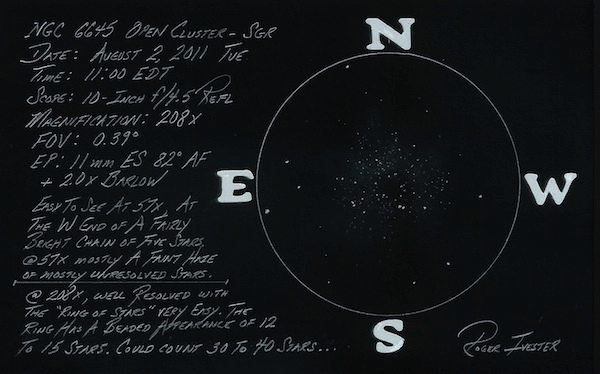
I could easily see it with my 102 mm refractor at 50x, but it appeared only as a faint haze, west of a fairly bright chain of five stars. When increasing the magnification to 90x, an obvious grouping of stars made a small ring, devoid of any stars. I have observed this cluster on many occasions, but had never noted this most unusual feature. Others have reported seeing this small circlet of stars. From the Observing Handbook and Catalog of Deep-Sky Objects by Brian Skiff and Christian Luginbuhl: "The denser core is about 10' across and dominated on the N side by a 2'.5 circlet of a dozen stars with an empty center."
In Deep-Sky Wonders by Sue French, P-221: "My 10-inch scope at 115x reveals a lovely group of 70 irregularly strewn stars with a sable void near its center."
I could count about 20 of the brighter members with the 102 mm refractor, however, with a night of better conditions the transparency would have allowed resolving some of the fainter members.
A couple of nights later, with excellent conditions, using my 10-inch f/4.5 reflector and a magnification of 208x the "ringlet of stars" or the central void could be seen fairly easily. About 60 stars could be counted with 12-15 stars comprising the central ring. The overall shape of the cluster is mostly irregular, and I noted a fairly bright double star south-southwest of the center.
The above sketch was made using a No. 2 pencil, and a blank 5 X 8 note card, inverting the colors via my scanner. My observations of this cluster were made from my moderately light-polluted backyard in the foothills of western North Carolina. I thought this cluster needed a name, so I'm now calling it the "Ringlet Cluster." If you have not observed NGC 6645, please give it a try, and see if you too can see the ring of stars. Roger Ivester
Were you able to find the "Ringlet Cluster"? Could you make out the small ring devoid of stars? Tell us in the comments!
{ sourceURL:'/catalog/includes/quicklook_miniproduct.jsp?entityId=103242&entityTypeId=4', sourceSelector:'' }
Located in the southern constellation of Carina, IC 2220, better known as the "Toby Jug Nebula," pours its nebulous contents into space some 1,200 light years from Earth. Brought to light by a red giant star cataloged as HD 65750, this cloud of gas and dust was recently the subject of an observation done by ESO's Very Large Telescope (VLT), the most advanced ground-based system of optical instruments in the world today.
Deep within the folds, arcs and curls of the nebula, is the progenitor star - one which is about five times larger than our own Sun. Even though it is a relatively young star, around 50 million years old, it has aged fast. Instead of peacefully burning, it is spewing its mass into surrounding space and this material is forming a cloud of gas and dust around it as it cools. It is "star stuff"... dust which is made up of fine grains of elements like carbon, titanium oxide and calcium oxide.
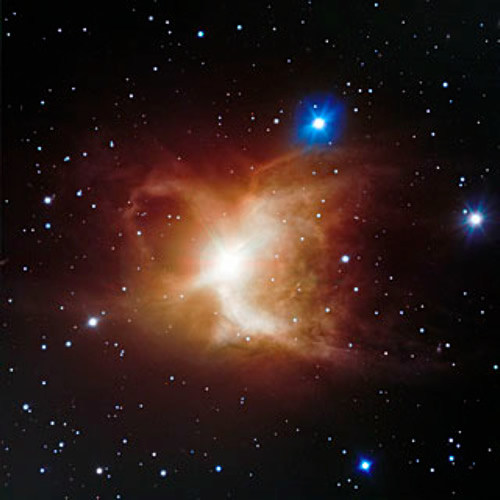
IC 2220, Toby Jug Nebula. Credit: ESO
Yet that's not all. Thanks to infrared imaging, the VLT has also identified silicon dioxide, the probable compound responsible for reflecting the embedded star's light.
Spanning across about a light year of space, the Toby Jug Nebula is much like looking into a shaft of sunlight as seen here on Earth. As you gaze at it, you see tiny motes of dust spinning and reflecting the light. IC 2220 works on much the same principle. The star releases huge amounts of material in an almost symmetrical pattern and creates a structure we can identify.
Since this phase of stellar life is short, these objects are not only beautiful, but rare, too. Red giant stars are very near the end of their lifetimes - their storehouses of hydrogen nearly depleted. Once gone, the star no longer has fuel to burn and its atmosphere begins to swell to enormous proportions. Stars like HD 65750 burn a shell of helium outside a carbon-oxygen core, sometimes accompanied by a hydrogen shell closer to the star's surface.
Although you and I won't be around when it happens, our Sun may one day meet a similar fate. Billions of years from now, Sol will run out of gas and begin to inflate. Its proportions will encompass the current orbit of Earth and it will swallow all of the inner planets as it expands. Even if mankind survives that long, the Earth would not. If our Sun became a red giant, the massive increase in radiation and the intense solar winds which accompany stellar inflation would devastate our planet. All life would cease to exist, our oceans would evaporate and Earth would melt.
However, don't worry. Unlike our Sun, stars with high mass cycle through their lives much more quickly than lighter ones. Their timelines are measured in billions, rather than millions, of years. This gives us plenty of generations of astronomers to wonder over distant space creations, and plenty of time to drink from the Toby Jug Nebula.
{ sourceURL:'/catalog/includes/quicklook_miniproduct.jsp?entityId=103786&entityTypeId=4', sourceSelector:'' }
Are you bothered by spiders? Then you might want to take a step back from the web as you view the latest Hubble Space Telescope image - the Tarantula Nebula. In this best-ever view, the imaging team has given us an unprecedented look into a stellar gem, filled with sparkling star clusters, brightly glowing gas and mysterious dark dust. In an effort to further understand what makes this star-forming region tick, astronomers are mapping its components in a study called the Hubble Tarantula Treasury Project. The goal of the HTTP is to scan the millions of stars within the Tarantula, mapping out the locations and properties of the nebula's stellar inhabitants. These observations will help astronomers to piece together an understanding of the nebula's skeleton.
Located about 160,000 light years away in the constellation of Doradus, this glowing treasure is cataloged as NGC 2070 and is a member of the Large Magellanic Cloud (LMC). It's an area so bright that it was once thought to be a star, but Nicolas Louis de Lacaille found it nebulous in nature with his tiny telescope back in 1751. Just how bright is it? Astronomers believe if it were as close to Earth as the Orion Nebula that it would be bright enough to cause shadows!
Even though the Tarantula has been imaged by the Hubble before, in 2004, 2010, 2011 and 2012, this new collection of photons takes an even closer look at this turbulent region, giving us the "deepest and most detailed view yet." This image includes both near-infrared observations from both Hubble's Wide Field Camera 3 (WFC3) and Advanced Camera for Surveys (ACS). The soft, violet hues scattered throughout the photo are the result of a combination of infrared filters, while the red ribbons signify the presence of dust. What's more, there are electrifyingly bright stars to help illuminate the scene.
What we are looking at is a prime example of an HII region. This is a huge, deep spread of partially ionized hydrogen gas. Here the low-density cloud is producing new stars, its fanciful shape caused by the random pattern of stars inside it. Just to the left of center you'll spy an incredibly tight star cluster known as R136. Its members are so close together that it was once thought to be a single star! Astronomers found it to be a mystery - they didn't understand how a lone, monstrous star could be able to ionize such a huge HII area. It didn't take long to figure out this was actually a cluster of stars: a "super star cluster."
Immense HII regions like the one seen in the Tarantula Nebula may be capable of birthing thousands of stars in just several million years. In this case, super star cluster R136 will some day grow up to be a globular cluster - a spherical collection of stars which orbits the center of its parent galaxy. Is this a spider's egg sack? You bet. R136 is so huge that it's responsible for the majority of the energy that causes the nebula to be so easily seen.
The studies of NGC 2070 will give us an even better understanding of star-forming regions as the Hubble Tarantula Treasury Project (HTTP) continues to scan and photograph several of the stars within it. These upcoming images will map out the locations and properties of those stars, giving astronomers a clearer understanding of the Tarantula's structure. Until then, we'll simply enjoy our journey into an intergalactic insect's web and thank the Hubble for the incredible inside view!
Original Story Source: Space Telescope.org
{ sourceURL:'/catalog/includes/quicklook_miniproduct.jsp?entityId=106426&entityTypeId=4', sourceSelector:'' }
Clear February nights present some great stargazing opportunities. Be sure to bundle up and keep warm while you get outside for some stargazing fun!
Here are a few of Orion's top picks for February stargazing:
- Lunar Pairings - 45 minutes after sunset on the evening of February 1st, the thin crescent Moon will pass about 11 degrees northwest of Mercury low in the western sky. You can enjoy this close pairing with unaided eyes, but you can also obtain a great view in binoculars or a small telescope. If you have a telescope, Neptune will be only 3 degrees east/northeast of Mercury (but tough to see in the twilight)!
- On February 10th, the Moon will be 5 degrees south of Jupiter.
- At dawn on February 19th, the Moon will glide less than a degree from the bright star Spica. Adding to the spectacle, Mars will be only about 5 degrees above Spica towards the northeast.
- On February 22nd, the Moon will be very close to Saturn in the dawn sky. In the Southern Hemisphere, the Moon will actually appear to cover Saturn in what's called an occultation!
- In the pre-dawn sky on February 26th, there will be an amazing pairing of the Moon and Venus. Break out your solar system camera to capture this conjunction!
- New Moon Weekends - New Moons on January 30 and February 28/March 1 mean the best weekends to take your telescope out for some deep sky observing will be February 1st & 2nd and March 1st & 2nd. The dark skies presented by the New Moon on these evenings presents a great, albeit chilly, opportunity to get clear views of deep space objects in larger telescopes.
- Jupiter Shines Bright - The biggest planet in our solar system will be a splendid sight for stargazers throughout February. Look for gigantic Jupiter near the constellation Gemini. Since Jupiter sets well after midnight throughout February, it will be a great planetary target for telescopes and astrophotographers. At mid-month, Jupiter passes through the meridian about 10PM.
- Great Binocular Cluster - Get out your 50mm or larger binoculars for a great sight of the Pleiades star cluster (M45), which will be high in the northwestern sky during February. While you can see the Pleiades with unaided eyes (from a rural location with dark skies), the open star cluster is a much more spectacular sight in binoculars.
- Our Favorite Nebula - At around 9pm throughout February, almost due south and about halfway up from the horizon, our namesake constellation Orion will be in a great viewing position. Use 50mm or larger binoculars or a telescope and look in the area below the three recognizable stars of Orion's belt for a great view of M42, the Orion Nebula. Any telescope will show it, but we feel a 6-inch f/8 telescope with a 32mm, 2-inch eyepiece gives just about the perfect view, with the cloudy nebula neatly filling the field of view (use an Orion Oxygen-III Nebula Filter if you try this from the city).
- Winter Star Clusters - Look east of bright star Sirius with a telescope to see two beautiful star clusters, M46 and M47 in the constellation Puppis. For more star cluster observations in February, look in the constellation Auriga and go after glittering clusters M36, M37 & M38, or M35 in the constellation Gemini.
- Bright Galaxies - In late February, bright galaxies M81 & M82 will be about as high in the sky as they will get for North American stargazers. From a dark sky site, these galaxies are visible with a 50mm binocular, but we suggest you use a large telescope to chase these galaxies down just off the leading edge of the Big Dipper asterism. Many observers consider M81 & M82 the best pairing of visual galaxies in the sky!
- Challenge Object: In the constellation Monoceros there lies the 9th magnitude Hubble's Variable Nebula, named after the astronomer Edwin Hubble (yes, the same as the Hubble Telescope). While small, this distant nebula is bright enough to be picked out as a pin point of light with 70mm binoculars. As the name implies, it does vary in size and brightness since its glow is "powered" by a variable star buried within its nebulosity. What's the smallest scope you can see it with - tell us on Facebook!

9th magnitude Hubble's Variable Nebula
All objects described above can easily be seen with the suggested equipment from a dark sky site, a viewing location some distance away from city lights where light pollution and when bright moonlight does not overpower the stars. All objects have been verified by actual observations by Orion Telescopes & Binoculars Staff at Fremont Peak State Park, and/or Deep Sky Ranch, 60 miles and 90 miles respectively from San Jose International Airport, San Jose, CA.
{ sourceURL:'/catalog/includes/quicklook_miniproduct.jsp?entityId=106498&entityTypeId=4', sourceSelector:'' }
Discovered by William Herschel on the day after Christmas in 1783, Hubble's Variable Nebula, is a fan-shaped nebula illuminated by the star R Monocerotis, in the constellation Monoceros. It was the first object to be photographed by the famous 200-inch Hale telescope on Palomar Mountain back in 1949. But that is not what makes this deep sky object so interesting.
Unlike many of the seemingly-unchanging nebulae of the deep sky, this reflection nebula appears to change in brightness and structure over weeks and months. Stephen James O'Meara described this fluctuating nebula as "a puff of breath, an ignited match next to a raging forest fire. Or so it seems, in deep, wide-field photographs." Both the illuminating star at its apex, and the nebulosity are considered variable, and many amateur astronomers have used images to illustrate shadows sweeping across it - Edwin Hubble being the first to note the changes in 1916.
Walter Scott Houston noted that at times he could detect it in a three inch telescope, while at other times, at ten inch telescope was needed.
NGC 2261 is also known as Caldwell 46, and the chart below shows its location as C46:
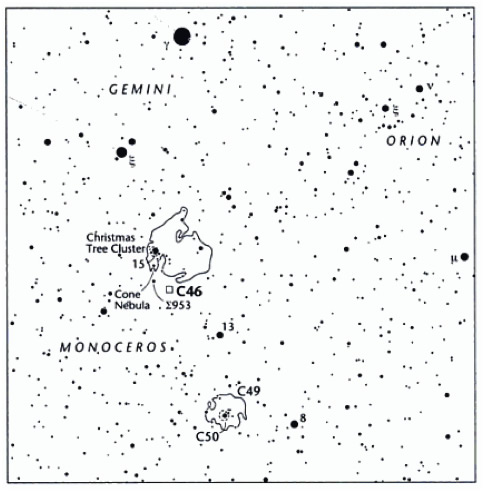
This month, make sure to locate Hubble's Variable Nebula, and share your observations with Orion's community - either as a "Review" on this article, or in the comments of this article on our Facebook Page. Here are two recent observations of NGC 2261:
Roger Ivester:
My observation was made using a 10-inch f/4.5 reflector telescope from my moderately light-polluted backyard, located in the foothills of western North Carolina. The nebula is fairly small with high surface brightness, which allows the use of high magnification if seeing is good enough. The illuminating star, R Monocerotis is positioned at the apex of the extreme southern tip of the nebula. The shape of the nebula is triangular with a wide fan shaped tail pointed toward the NNW. I saw the nebula easily at low power, but high magnification was necessary to see the faint and interesting details. When I increased the magnification to 267x, structure was noted. The brighter section just north of R Mon. has the greater concentration following the western edge and also along the NE edge. The broad fan tail fades very suddenly and the NE side makes an obvious curve toward the NW. See other articles and sketches by Roger Ivester HERE. Here is a pencil sketch of NGC 2261 by Roger Ivester, colors inverted on a scanner:
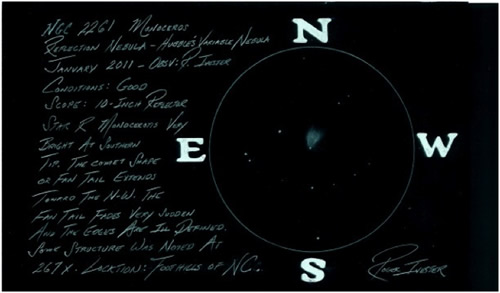
Kevin Ritschel of Orion:
In a 5" triplet, f/7.5 on an Orion Atlas Pro Mount: This was a nice challenge, since I have never attempted to see this object in a telescope as small as the 5" refractor. To locate the object I did not use GoTo function of the mount, I star hopped from 8 to 13 Monoceros, past where Hubble's variable nebula is to the Cone Nebula and went back towards 13 Mon to the area where the 2261 is located. At first, scanning the area with a 1.25" 25mm Plossl I did not see the object. Replacing the eyepiece with a 1.25" 14mm, 82 degree FOV eyepiece I could see the nebula with direct vision. Through the 5", it is directly visible, but nothing as noticeable as a brighter galaxy, or say M57; the brightness would be comparable to other, fainter NGC objects - say a 10 or 11th mag galaxy.
With the 14mm, 68x, the nebula is distinctly fan shaped - like a "V" or half-closed fan with the brightness fading irregularly the further from the tip of the fan where the blades meet. This object has a distinctive shape, very unlike a galaxy (which are more lenticular) when viewed through a telescope.
The object reminded me of a comet or an out-of-focus star in a poorly collimated telescope - except that all the other stars in the field were in focus and round pinpoints.
Switching to a 1.25" 6mm Orion Planetary eyepiece, 159x, 2261 was seen as having a bright node at the vertex of the v-shaped nebula (the dense part of the cloud that hides the variable star R Monocerotis (R Mon). Since the object was easily seen with direct vision, I did not use nebular filters to attempt to enhance the view.
My first-ever view of this object was with a Coulter 17.5 Dobsonian (f/4.5) many years ago and NGC 2261 was far more distinct in the larger instrument; in fact, I was surprised how easy it was to see. Bigger is better!
{ sourceURL:'/catalog/includes/quicklook_miniproduct.jsp?entityId=106517&entityTypeId=4', sourceSelector:'' }
Comfortable August nights seem to be tailor-made for backyard astronomers. Warm August evenings are great opportunities to get the whole family outside for stargazing fun exploring the heavens with your telescope or astronomy binoculars.
- Here are some of our top suggestions for August stargazing:
- Moon occults Saturn - Get outside during the evening of August 4th with a pair of 10x50 or larger binoculars to see ringed planet Saturn appear to "hide" behind the Moon during an occultation. You can also take a closer look at this celestial disappearing act in a telescope as the Moon passes between Earth and Saturn.
- Supermoon - The closest and largest Full Moon of 2014 will brighten up the night sky of August 10th. The Moon will not come as close to Earth again until September of 2015. This so-called "Supermoon" is also called a perigee Full Moon, since "perigee" is defined as the point in space where an Earth-orbiting object is closest to our planet. Even though the Moon will be much closer to Earth than normal, it is rather difficult to visually notice the difference in size, but it should still be a spectacular sight.
- The Perseid Meteor Shower - One of the most popular meteor showers of the year, the Perseids, peaks between August 10 and August 13. A waning Gibbous Moon in the sky may make it difficult to spot as many meteors as in past years, but we think it's worth getting outside for a chance to see these fleeting fireballs. Get some lawn chairs, a clear view of the sky and gather your friends & family for a night of stargazing punctuated by beautiful meteors!
- Venus and Jupiter Conjunction - The two planets will come within just ¼ degree of each other in the pre-dawn sky of August 18th. As an added bonus, M44 the Beehive Cluster will only be a degree away as well. This will be a spectacular conjunction to observe a few mornings in a row as the planets move closer to each other.
- The Summer Milky Way - As soon as it gets dark on the evening of August 25th, when the Moon isn't visible during the New Moon phase, you can see the grandest unaided-eye sight in the night sky from a dark sky location - our home galaxy, the Milky Way. Use binoculars and telescopes to scan and tease out dozens of star clusters, nebulas and planetary nebulas. From a dark sky location, away from city lights, the Milky Way is easy to see and majestic in scale, but you can't see it near heavily populated areas due to light pollution; so plan a summer adventure to a national park or your favorite dark sky site to experience this "must-see" astronomical sight.
- Venus in the Morning Sky - Shining with astounding brightness throughout August is Venus, our next-door neighbor planet. To find Venus, get a clear view to the east in the predawn sky. it will be the brightest thing in the sky, except for the Moon! For an interesting sight, take a look at Venus through a telescope to see its partially illuminated "phase".
- Say "See You Later" to Saturn - August will be the last month this year to get a good view of Saturn through a telescope. At the beginning of August, Saturn will still be well above the horizon as the sky gets dark, so the "seeing" should be acceptable for good telescopic views. By the end of the month, it will be only about 10 degrees above the horizon at twilight's end. As an added bonus, Saturn will appear very close to the Moon - just 21 arc minutes away - on August 31st in a very close conjunction. Grab a powerful pair of binoculars or a telescope to see this nice pairing in the sky.
- Grand Summer Nebulas - Hercules Galaxy Cluster: These excellent examples of gaseous nebulas are well placed for viewing in August - See the star chart in Orion's online Community section to find out where you can track them down. The brightest are M16 the Star Queen Nebula, M17 the Swan Nebula, M20 the Trifid Nebula and the very bright M8, the Lagoon Nebula. All are visible in binoculars from dark locations with good seeing. Use a small to moderate aperture telescope with the aid of an Oxygen-III eyepiece filter or SkyGlow filter to see them from more suburban locations.
- Summertime Star Clusters - Hercules Galaxy Cluster: Even from the city, you can track down some of the brightest star clusters of the summer sky in August. The brightest and best include M13, M93, M11, M6 and M7. You can see these under good skies with a humble 60mm scope, but it will take something larger like a StarBlast 4.5 or a 6" to 8" Dobsonian reflectorto reveal their true beauty.
- August's Challenge Object - This month, our challenge is actually a very easy object to see with a telescope, but not so easy with binoculars! Well suited for observing this month is M27, the Dumbbell Nebula in the constellation of Vulpecula, just south of Cygnus, the Swan or Northern Cross. M27 is one of the nearest and therefore one of the brightest and largest planetary nebulas visible from Earth. It's so big that it can be spotted in 7x50 binoculars! Try to track M27 down this August with your binoculars, it will be a small dot, slightly larger than the surrounding stars, but definitely visible through binoculars. What's the smallest binocular you can see it with?
All objects described above can easily be seen with the suggested equipment from a dark sky site, a viewing location some distance away from city lights where light pollution and when bright moonlight does not overpower the stars. All objects have been verified by actual observations by Orion Telescopes & Binoculars Staff at Fremont Peak State Park, and/or Deep Sky Ranch, 60 miles and 90 miles respectively from San Jose International Airport, San Jose, CA.
{ sourceURL:'/catalog/includes/quicklook_miniproduct.jsp?entityId=108256&entityTypeId=4', sourceSelector:'' }
Inspiring tips from Duke Skygawker on how to publicize and host a successful astronomy outreach event.
Hosting an astronomy outreach event is probably the most rewarding and fun way to share the night sky with others. But doing astronomy outreach doesn't do much good if there's no one there to reach out to. So how do you make sure appreciative people are on hand to enjoy the astronomical wonders you'd like to share with them?
This article shares a number of tried and true strategies to help you advertise, brand, and effectively gain participants to your astronomy observing events. I start with strategies for getting the word out about traditional events at your local observatory or club, followed by strategies for nontraditional outreach events, like sidewalk astronomy, or my personal venture, Barstronomy
TRADITIONAL EVENTS:
It's very important to establish a presence in the market, especially if you count on the revenue from admission to help fund your operations. Being an established group or facility has its advantages, including potential patrons' ability to count on the fact that you have a public program on a recurring schedule.
My "home" dome, Perkins Observatory in Delaware, Ohio, does public outreach almost every Friday night, rain or shine, except holidays and in July. In this way, the public can count on a program whether or not sky views are possible. An entertaining talk about "what you would have seen," along with tours of the historic observatory-its "ghost story," many types of telescopes, and a full library go a long way toward salvaging a cloudy program night, and there's lots of those in central Ohio. Maybe you're luckier where you're located.
Manned by staff (only two people), Perkins counts on volunteers from the Columbus Astronomical Society to help park cars, operate telescopes on the front lawn, and engage program attendees in one-on-one conversation about the heavens. So these programs serve "double duty" as CAS outreach events, with all revenues going to Perkins, and the club earns its funds via member dues.
Perkins makes it easy to find program information: just go to their website. They're part of Ohio Wesleyan University, and right on the front page, you see this a list of their upcoming events.
Social Media:
Perkins observatory also has a Facebook page, promoting their programs and space news, and the CAS uses their Facebook and web presence to do the same. If your local club doesn't have a Facebook page, consider setting one up to get the word out and to document your events. You might even consider using Twitter and Google+ as well.
Media Presence:
Along with their own sites and pages, the "O" makes sure local newspapers and media outlets have their schedule, updated every few weeks, to ensure the programs will appear on local "things to do" calendars. Familiarize yourself with your local media outlets and establish a contact who you can send press releases or links to events pages-remember to give them a few weeks notice to increase the chances of them including your event. You might even be able to post your events directly to online events pages of your local media outlets.
It also helps to have a charismatic staffer to maintain a strong media presence, and Perkins' Director Tom Burns does exactly that. He uses his extensive knowledge, well-honed routine and genuine enthusiasm to write regular print articles, make radio and TV appearances, and serve as a very visible ambassador. Establishing a presence as the "go-to" person to ask about any astronomy news or sky event helps strengthen the brand as well.
Radio and TV public service announcements (PSAs) are yours for the asking, if you're a nonprofit or educational institution, as most doing public astronomy outreach are.
Event Flyers and Posters:
There are other things that can also help your scheduled, traditional astronomy programs reach a wide audience. Attractive posters are a great tool for creating visual enticement to attend. Display them in area businesses; busy coffee shops and cafes, for instance, as well as in libraries and government facilities. Design your posters to be eye-catching, and don't try to cram too much text onto them-most people will only have time for a quick look, so display the time and date prominently, with a brief summary of what to expect and your website or contact info for interested parties. Here is an excellent example of an event flyer, by the Austin Astronomical Society in Texas:
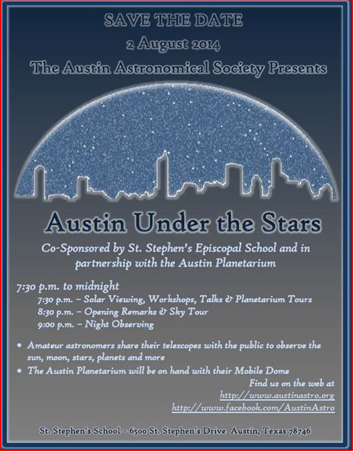
Most astronomy outreach events are great family activities, so be sure to advertise that kids are welcome, (if they are), and you'll likely see an increase in families marking their calendar for your event.
Signage at Your Event Site:
Good visible signage near your location, if possible, makes your site easy to find at program time, and is also a constant reminder to those who drive, bike, or walk by.
Embrace Your Current Followers:
Don't forget to preach to the faithful, either. Your observatory or club newsletter can go a long way in cajoling your members and patrons to talk about your programs, get them to return, and bring other patrons with them, too. The Austin Astronomical Society in Texas does this very well in their newsletter, publishing their event schedule, a full-color poster, and a regular request for members to print copies and post the information in their neighborhoods and nearby businesses. (Note not for publishing: included picture files of these items, using one or more at your discretion). The Austin Astronomical Society also publishes an outreach activity report each month, so members can understand how they're impacting the public, and be inspired to continue those efforts.
Word-of-Mouth:
Finally, don't discount word-of-mouth, always one of the best plugs there is-as long as your patrons have a positive experience! People who come away from your program satisfied and amazed are going to talk about it to their friends and neighbors, and that brings more visitors.
Many clubs not associated with an observatory or directly with another institution, often hold regular public observing nights in other locations, such as a school, park, or club observing site. The same methods of promoting the event are applicable to these as well.
NONTRADITIONAL EVENTS:
First, let's identify what a "nontraditional" astronomy outreach event might be. A good example is the one started by John Dobson and the San Francisco Sidewalk Astronomers. This sidewalk astronomy method of taking scopes to the city streets and parks, rather than making people come to an observatory or dark-sky observing site, serves to reach out to those who don't make up the usual program audience. The people you'll be interfacing with are passers-by, likely attending a nearby event or attraction, and it can be a great pleasure for them to unexpectedly stumble on you and your telescope. Many of the people you'll meet may be looking through a telescope for the very first time!
The
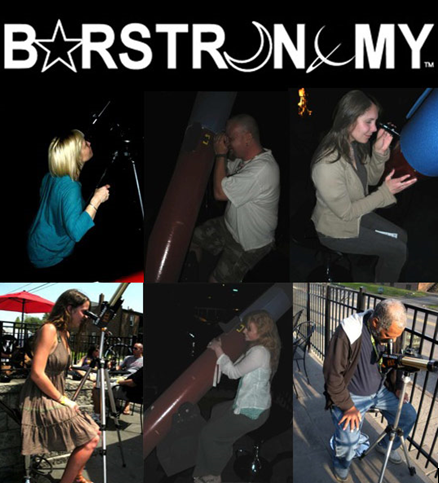
Internet Buzz:
Sure, the element of surprise is a beautiful thing when it comes to sidewalk astronomy and nontraditional events, but it also helps to let as many people as possible know about your planned set-up location, time and date.
Websites and social media can make a big difference. If you are able to drive traffic to your website, gain friends on Facebook, followers on Twitter and Instagram, and group members on Google+, these are great platforms to publicize your events.
Many "sidewalk" type outreach efforts take place on a regular basis, but others don't. For the more spontaneous, short-advance-notice type events, which may not take place until conditions are just right, the Internet is an "instant" way to get the word out to potential attendees-working much faster than newspapers, print ads, or newsletters.
Email Lists:
Email can play a very supportive role as well. If you capture email addresses from those who view at your sidewalk event, and are careful not to "spam" them or let others use your hard-earned email list, you can generate repeat visitors, and let those on the list inform others if they wish. The best way to get people to sign up for your email list is to inform them of exactly what to expect-that you'll be sending event info, and how frequently you'll be sending it. Most people won't sign up for an email list if they think you'll be peppering them with emails every single day, but monthly or bi-monthly email is usually a more-than-welcome approach.
Location, Location, Location:
But really, the best way to generate an audience for this type of outreach is to go where the crowds are! Don't worry about the city lights-just make sure you have a good line-of-sight to at least a couple of bright targets, like the Moon and Jupiter. The most important thing you can do for this type of outreach is just show up!
That said, don't just walk into a private venue or location and begin setting up. You do need to clear it with the owners or managers, whether it's a restaurant, bar, city park, library, or government building.
And remember, the just show up method is most effective when you are able to go where a crowd will be gathering for a popular scheduled event or venue-it may be a concert, sporting event, festival, or well-known bistro or watering hole.
City sidewalks do not require permission, although it's definitely advisable to let the police department or similar authority know what you're doing. They'll appreciate the heads-up. Be sure not to impede traffic or interfere with event operations so that you'll be welcomed back next time.
Signage:
Placing posters around your setup area will help you grow an audience, especially because people won't be expecting astronomical observing, and didn't come to the locale with that in mind.
The ubiquitous "quarter-sheet" flyer, which can be printed up quickly, cut and handed out to passersby, is a good way to let them know what's going on. A large banner, suitable for hanging on a fence, wall, window, or over a door, can also draw curious people who want to find out what it's all about. A "Moon Viewing" banner, for instance, can be reused many times, especially if you use sturdy material. Here's an example of a Barstronomy flyer:
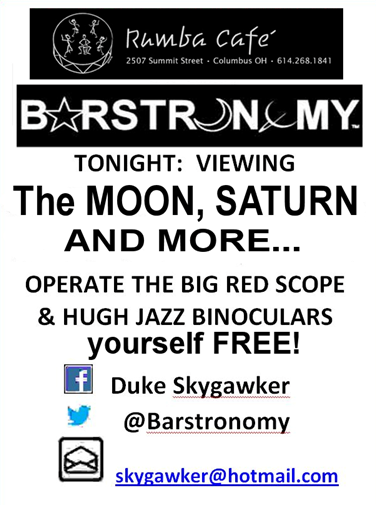
Radio and Media:
If you've managed to gain some branding in your area, you may find local radio stations willing to take a call to promote your appearance. Electronically-generated news releases work too, if you're able to get them to daily media outlets at least two days in advance, although weekly newspapers will often need a bit more notice.
On-site Networking:
As you talk to your site hosts and attendees, always remind them you can be available for their location or other special programs. You'll be surprised how this type of networking can lead to other opportunities to bring astronomy to nontraditional audiences.
Sidewalk Equipment:
One other thing I think is very important: If possible, use equipment people can get their own hands on and operate. That's not usually the case for traditional programs, but it's the best way to go for "sidewalk" type venues. In other words, don't bring your Takahashi with a mint finish, or your best $1,000 eyepieces. Better is a nice simple 6-10" Dobsonian and some serviceable but inexpensive eyepieces. Have a red-dot finder like the
Tracking Trick for the Newbie:
People may have trouble tracking if they're worried about how the scope is moving, so here's an easy analogy I've found that works nearly 100 percent of the time: ask your participants if they've used a mouse to move a cursor around a computer screen. (Almost everyone has.) Then just tell them the object is the cursor, the FOV is the screen, and the end of the scope is the mouse. It can be one of the most effective ways to bring a successful hands-on, interactive experience to your outreach guests. And that success may just lead them to understand that telescopes don't have to be expensive and complicated to show some great views and get them to be a lifelong personal astronomy enthusiast. And isn't that what we want? I think it is!
Share your tips for hosting a successful astronomy outreach event in the comments!
{ sourceURL:'/catalog/includes/quicklook_miniproduct.jsp?entityId=113086&entityTypeId=4', sourceSelector:'' }
October nights will be full of celestial treats for amateur astronomers to see with binoculars and telescopes. Here are some of our top October stargazing suggestions:
- Total Lunar Eclipse - If you live in the western half of North America or in Hawaii, mark your calendars to catch a Total Lunar Eclipse on the night of October 8th. During this must-see event, the Moon will pass through the Earth's shadow, causing the Moon to temporarily turn a beautiful, bright orange-red color. Use a pair of binoculars or unaided eyes to see this rare event, or go the extra mile and capture snapshots of the Total Lunar Eclipse by using a telescope equipped with a tracking motor drive and an astrophotography camera
- Jupiter Season Begins - Big and bright planet Jupiter will rise in the east around midnight in early October, and by about 10 PM near the end of the month. While Jupiter's brightness makes it easily visible to unaided eyes, try looking at the Jovian giant with a pair of 50mm or larger astronomy binoculars to coax out views of its 4 brightest moons; Io, Europa, Ganymede and Callisto. Check in on Jupiter every night to see these moons change position as the "dance" around Jupiter in their orbital paths. With even a small telescope, you'll see Jupiter's main equatorial cloud belts at high power, but step up to a 6" or 8" telescope and the show is spectacular.
- Best Chance to See Distant Uranus - On October 7th, planet Uranus will at opposition (meaning the Earth will be positioned between Uranus and the Sun along a roughly straight line). This is when Uranus will be in its orbit's nearest point to Earth. Grab a pair of binoculars or a telescope and a star chart or StarSeek app to try tracking down this 6.5 magnitude planet, which is just below naked-eye visibility, in the constellation Pisces. While the Full Moon of October 8th will make viewing Uranus a challenge, it's still worth the effort to know you're looking at one of the most distant planets in our Solar System.
- October Deep Sky Treats - In early October, catch your last glimpse of the year of the galactic center in the constellation Sagittarius, low in the southwestern sky, where you can track down four great emission nebulas - M8, the Lagoon; M20, the Trifid; M17 the Omega; and M16, the Eagle or "Star Queen" nebulas.
Two great planetary nebulas are still well-placed in October skies - M57, the Ring Nebula; and M27, the Dumbbell Nebula.
Look for interesting galaxy NGC 7331 in the northwestern section of the constellation Pegasus. With a 12" or larger aperture telescope and good seeing conditions, you may be able to tease out the galaxy's faint spiral arms.
- Partial Solar Eclipse - On October 23rd, grab your solar filter equipped telescope or binoculars and get outside before sunset to witness a partial solar eclipse! You won't want to miss the action as the Moon's shadow appears to "take a bite" out of the setting Sun just before sunset. We'd love to see your astrophotos of this rare solar event - but don't forget to use a protective Orion Solar Filter for your telescope.
- Challenge Object: NGC 404 - Use your StarSeek app or a star chart to track down star Beta Andromeda in the constellation Andromeda. Carefully inspect the area just northwest of the star to see the faint glow of galaxy NGC 404, a small 11th magnitude dwarf galaxy that's approximately 10 million light years away from Earth. You'll likely need a 6" or larger telescope at high power, but can you see it in a smaller telescope?
All objects described above can easily be seen with the suggested equipment from a dark sky site, a viewing location some distance away from city lights where light pollution and when bright moonlight does not overpower the stars.
{ sourceURL:'/catalog/includes/quicklook_miniproduct.jsp?entityId=113042&entityTypeId=4', sourceSelector:'' }
{"showSinglePage":false,"totalItems":263,"defaultPageSize":20,"paging_next":"Next","paging_view_all":"View All 263 Items","paging_view_by_page":"View By Page","pageSize":20,"paging_previous":"Prev","currentIndex":240,"inactiveBuffer":2,"viewModeBeforePages":true,"persistentStorage":"true","showXofYLabel":false,"widgetClass":"CollapsingPagingWidget","activeBuffer":2,"triggerPageChanged":false,"defaultTotalItems":263}






Why Buy From Orion
- 30 Day Money Back Guarantee
- Safe & Secure Shopping
- Next Day Shipping
- Easy Returns
- Sale Price Guarantee
- Free Technical Support

Shop Our Catalogs
Check out our colorful catalog, filled with hundreds of quality products.
See our eCatalogsEmail Sign Up
- 800-447-1001
- Telescope.com
- © 2002- Orion Telescopes & Binoculars All rights reserved
- DMCA/Copyright
- Terms and Conditions
- Privacy & Security





About Orion Telescopes & Binoculars
Since 1975 Orion Telescopes & Binoculars has been offering telescopes for sale direct to customers. Now an employee-owned company, we pride ourselves on an unswerving commitment to best quality products, value and unmatched customer care. Our 100% satisfaction guarantee says it all.
Orion offers telescopes for every level: Beginner, Intermediate, Advanced, and Expert. From our entry level beginner telescopes for amateur astronomers to our Dobsonian telescopes to our most advanced Cassegrain telescopes and accessories, you can find the best telescope for you. Because we sell direct, we can offer you tremendous value at a great price. Not sure how to choose a telescope? Orion's Telescope Buyer's Guide is a great place to start.
Orion binoculars are known for quality optics at a great price. We offer binoculars for every viewing interest, including astronomical binoculars, compact binoculars, waterproof binoculars, birding binoculars, and sport and hunting binoculars.
Orion's telescope and astrophotography accessories will enhance your telescope enjoyment without breaking the bank. Expand your viewing experience with accessories ranging from moon filters to power-boosting Barlow lenses to advanced computerized telescope mounts. Capture breathtaking photos with our affordable astrophotography cameras. And when you're stargazing, Orion's telescope cases and covers, observing gear, red LED flashlights, astronomy books and star charts will make your observing sessions more convenient, comfortable and meaningful.
At Orion, we are committed to sharing our knowledge and passion for astronomy and astrophotography with the amateur astronomy community. Visit the Orion Community Center for in-depth information on telescopes, binoculars, and astrophotography. You can find astrophotography "how to" tips and share your best astronomy pictures here. Submit astronomy articles, events, & reviews, and even become a featured Orion customer!
sales, new products, and astronomy.




